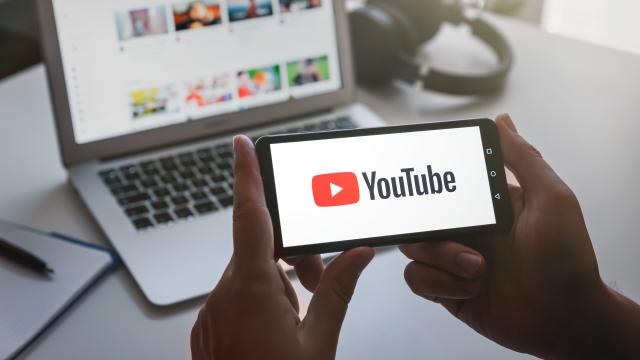We commonly think of YouTube as a platform for sharing videos with large public audiences, but it can also be a great way to back up or share videos privately, as long as you follow the platform’s copyright rules.
As David Gewirtz explains over on ZDNET, YouTube’s Content ID checks still apply to videos uploaded as private (meaning only the uploader can access them), or unlisted (which are viewable to anyone with a link, or if they show up in public playlists).
Scanning unlisted and private videos is actually helpful for professional content creators. They can upload a video as private to confirm it passes YouTube’s Content ID checks before the video goes public, or adjust the video if necessary and avoid demonization or serious copyright strikes. However, this is a major inconvenience for users that just want to share videos with select friends or upload a school project for easy viewing.
Usually, if your content is flagged by YouTube’s Content ID checks, you get a warning. But if the copyright holder decides to take action, it can result in your video being removed, or even a dreaded copyright strike. Strikes are a serious issue since just three copyright strikes against your account will permanently delete your channel, banning you from further uploads and rendering all uploaded content inaccessible unless you appeal the removal.
Luckily, there are ways to avoid YouTube copyright issues on your private and unlisted videos.
How to avoid Copyright Flags and Strikes against unlisted or private YouTube videos.
If you’re using YouTube as a way to back up or share videos privately, you still need to follow YouTube’s copyright guidelines. As per YouTube’s Copyright & Fair Use policy, the general rules are pretty simple:
“Creators should only upload videos that they have made or that they’re authorised to use. That means they should not upload videos they didn’t make, or use content in their videos that someone else owns the copyright to, such as music tracks, snippets of copyrighted programs, or videos made by other users, without necessary authorizations.”
It’s virtually impossible that YouTube would flag a privately-uploaded family video, but if you make, say, a class project with copyrighted music or footage, you could wind up tripping the Content ID checks.
Luckily, YouTube’s automated system checks videos when they’re uploaded, alerting you to copyright issues so you can address them immediately and avoid any consequences. However, YouTube’s Content ID checks are always happening, and can retroactively flag unlisted or private videos even if they initially passed the checks during the upload process.
In either case, if your video is flagged, there are things you can do to fix it and avoid a warning or strike.
What to do if your unlisted or private YouTube video is flagged
If you receive a copyright warning against your private or unlisted videos, don’t panic — you have a few options to fix it.
- Appeal the copyright strike: First, you can appeal the copyright warning or strike if you believe the video was flagged in error or that it falls within “fair use.” Fair use is a complicated subject, but YouTube’s Copyright Exceptions policy offers some general guidelines. If you decide to appeal, YouTube will review your request and reply within a few days to let you know if it was approved or denied.
- Delete or edit the video: If you don’t want to deal with appeals (or your appeal is denied), you can edit your clip using YouTube Studio’s back-end editing tools. The tools are limited, but they let you trim footage or mute and replace audio. You can also delete the video from the YouTube Studio menu, then edit in your preferred editing software and re-upload a new version to check again. Or, just remove it and keep it off YouTube entirely.
- Find a different video hosting site: Alternatively, you can upload your personal videos to other video hosting sites like Vimeo, Daily Motion, or The Internet Archives. Just note that they will have copyright restrictions, and in some cases, have different file size restrictions or even require payment to use.
- Use cloud storage instead: Cloud storage services like Google Photos/Drive, Dropbox, and iCloud are great solutions for backing up your videos, and you can send links to others so they can watch it in their browser. They’ll also look better than on YouTube or other video sharing sites, since YouTube’s compression often reduces video quality. There are also no copyright checks to keep in mind, but there are storage space limits for free users, and you may need to buy additional space if you plan to save a lot of videos.
- Go analogue: Lastly, you can also physically save your videos on storage media like USB drive, external hard drives, or even burnable Blu-rays and DVDs. Obviously, you can’t share physical media like you can a download link or YouTube clip, but it’s a reliable way to keep your videos safely stored.
[ZDNET]

Leave a Reply
You must be logged in to post a comment.